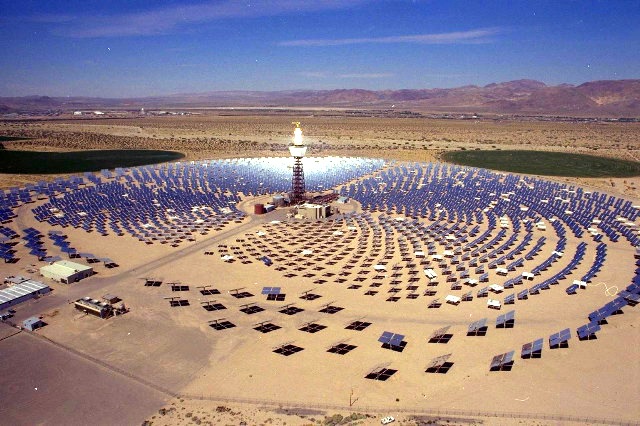
The next technology Chris Goodall writes about in his book"Ten Technologies To Save The Planet" is solar energy. Goodall lists three main ways to capture the sun's energy.The first is to put long tubes containing liquids in direct sunlight that when heated,with a heat exchange,can be used to heat water for showers and washing clothes.The second way is to use photovoltaic cells in panels to turn the photons of light directly into electricity.The third uses solar concentrators which use mirrors to focus large amounts of sunlight onto a small ares,heating fluids and using their energy to drive a turbine or a Stirling engine to generate electricity.
The first of these approaches has been used for centuries.The author's house has forty glass tubes about six feet long on the roof.Inside each tube is a thin,flat foil of copper.This foil is heated by the sun and transfers the energy to a liquid in a thin pipe running in the center of the tube.This liquid is pumped into a heat exchange that transfers the energy to the hot water tank.It captures perhaps 70% of the light energy falling into the glass tubes and no other solar technologies are anywhere near as efficient than this process.
The second approach produces electricity by means of photovoltaic cells which is still expensive compared to fossil fuel generation.The photovoltaic panels are 20% efficient in generating electrical energy.Most solar panels manufactured today are made from expensive slabs of pure silicon.The silicon is derived from a very abundant substance,common sand,but the process of refining it is complex and energy intensive.By 2009,according to Goodall,the panels across the globe could produce about 15 gigawatts of electricity.Solar electricity is growing rapidly(30-40% a year) but today's global output is only equivalent to a couple of very large coal-fired power stations or a small cluster of nuclear plants.
The largest U.S solar panel manufacturer is First Solar.It expects to achieve grid parity by 2012(cost to produce electricity).First Solar will be supplying several gigawatts of PV panels each year by building huge farms of panels in sunny areas.South-facing mountain slopes are ideal(good solar radiation but they are also relatively cool).First Solar uses a semiconductor called cadmium telluride,from which it makes thin inexpensive panels but only moderately efficient at capturing the sun's energy.
Nanosolar,a company funded by Google,are using CIGS(copper,indium,gallium,diselenide)as a semiconductor.It is revolutionary technology that "prints"the semiconductor material onto a flexible metallic backing layer.It could be wrapped around the exterior of millions of buildings across the world.It is using nanotechnology to precisely arrange the atoms on the printed semiconductor surface.
New solar concentrators are being developed by Covalent Solar,a company that has spun out of MIT.Their new devices increase the power obtained from solar cells by a factor of over 40 without needing to track the sun.MIT's version of this device consists of a piece of transparent glass or plastic plate with a thin film of dye molecules deposited on the face and inorganic solar cells attached to the edges. Light is absorbed by the dye coating and reemitted into the glass or plastic for collection by the solar cells.Their version of this device consists of a piece of transparent glass or plastic plate with a thin film of dye molecules deposited on the face and inorganic solar cells attached to the edges. Light is absorbed by the dye coating and reemitted into the glass or plastic for collection by the solar cells.
No comments:
Post a Comment